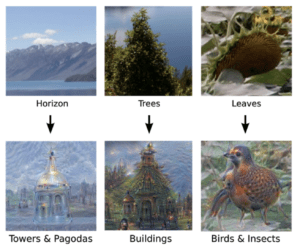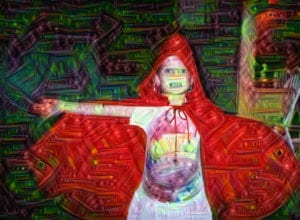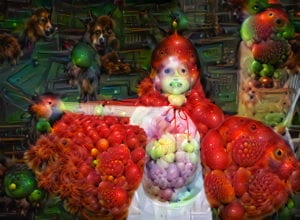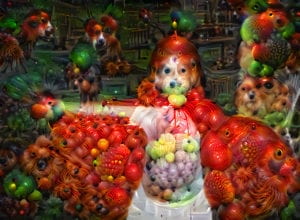For my case study I analyzed the Google Deep Dream project, a fascinating intersection of data analyzation and art that sprung from a Google images project on image recognition. Developed by Alexander Mordvintsev for the ImageNet Large-Scale Visual Recognition Challenge (ILSVRC) in 2014, the software was intended to categorize images based on faces and patterns. The software was open source which opened up possibilities for developers to tweak it, teaching the software to recognize various patterns, faces and images with different levels of sensitivity. The software can also be used in the reverse by teaching the network to adjust the original image to create a higher recognition rate for the faces or patterns it detects. The network can continue adjusting the image, going off of patterns found and exaggerating these patterns in each generation of the image, ad infinitum.

The result is highly psychedelic imagery that can be adjusted so that certain patterns are detected, such as dog or cat faces, with a popular version created for “jeweled birds.” The software can be applied to video as well, as seen in Memo Atken’s personalized code:
Using https://deepdreamgenerator.com/ a version of the software made available online with various filters and settings, I experimented with my own photo (of me as a child) and ran it through various iterations to produce some surrealist Deep Dream images.



Link to my presentation: https://drive.google.com/file/d/1hXeGpJuCXjlElFr1kn5yZVW63Qcd8V5x/view?usp=sharing
Sources:
https://www.fastcompany.com/3048274/heres-what-googles-trippy-deep-dream-ai-does-to-a-video-selfie
https://www.fastcompany.com/3048941/why-googles-deep-dream-ai-hallucinates-in-dog-faces
https://ai.googleblog.com/2015/06/inceptionism-going-deeper-into-neural.html